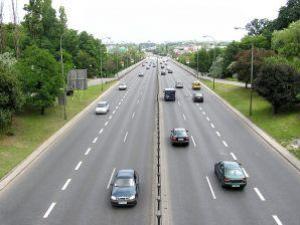

Research Bio
Raja Sengupta is a Professor of Civil and Environmental Engineering at UC Berkeley. Sengupta’s research focuses on automated cars, drones, connected cars, smartphone apps for economics & transportation, wireless networking, and control theory. He likes to do research on the industry and get it into the marketplace, and he holds car-to-road networking patents with Toyota, a UAV patent with BAE Aerospace, and car-to-car networking contributions standardized by the SAE into J2945. Sengupta has been an advisor to the World Bank, is a recipient of the USDOT’s Connected Vehicle Technology award in 2011, the UC Berkeley Energy and Climate Lectures Innovation award in 2014, and has authored over a hundred papers spanning control theory, networking, drones, and transportation.
Current Research Projects
Sensor networks for forest fire monitoring: The objective of this project is to distribute small sensors in the wild that detect the onset of fires through measurements of temperature, pressure, or humidity. He is working on the sensor positioning and localization aspect.
Neighborhood Mapping: Vehicle Neighborhood Map, developed in University of California PATH, is an in-vehicle sensing and communication system which allows a vehicle to learn its neighborhood. Vehicles exchange their location information among themselves over 802.11a wireless network in Ad-hoc mode. In-Vehicle safety applications (e.g. gap assistance, forward collision warnings) can base on this information to assist drivers for potential conflicts.
Each vehicle is equipped with GPS receiver and 802.11a wireless radio, and our software system . The software system consists of a GPS Broadcaster and a Neighborhood Map Builder. GPS Broadcaster broadcasts vehicle’s position onto 802.11a wireless network when it receives a new measurement from the GPS receiver . Neighborhood Map Builder listens to the wireless channel, and uses the Geo-cast protocol to filter out any messages which are outside of its neighborhood. Higher layer applications take these messages and transform them into vehicle’s body fixed coordinate frame. After the information is processed, in-vehicle display delivers it to the user.
Vision-Based Navigation: His group's fundamental research thrust is to make unmanned aerial vehicles (UAVs) and unmanned ground vehicles (UGVs) capable of self-directed collaborative navigation. They work toward a world where teams of unmanned vehicles will make possible what once was not. Whether aiding in firefighting, border patrol, search and rescue, convoy protection, remote environmental monitoring, or traffic radio reports, many aspects of commercial and structural life will be enhanced by the incorporation of autonomous collaborative vehicles. ,
Research Expertise and Interest
transportation, wireless communications, inertial navigation for vehicle systems
In the News
GPS innovation wins DOT wireless competition
Prof-led team's project lets cars communicate with each other.

